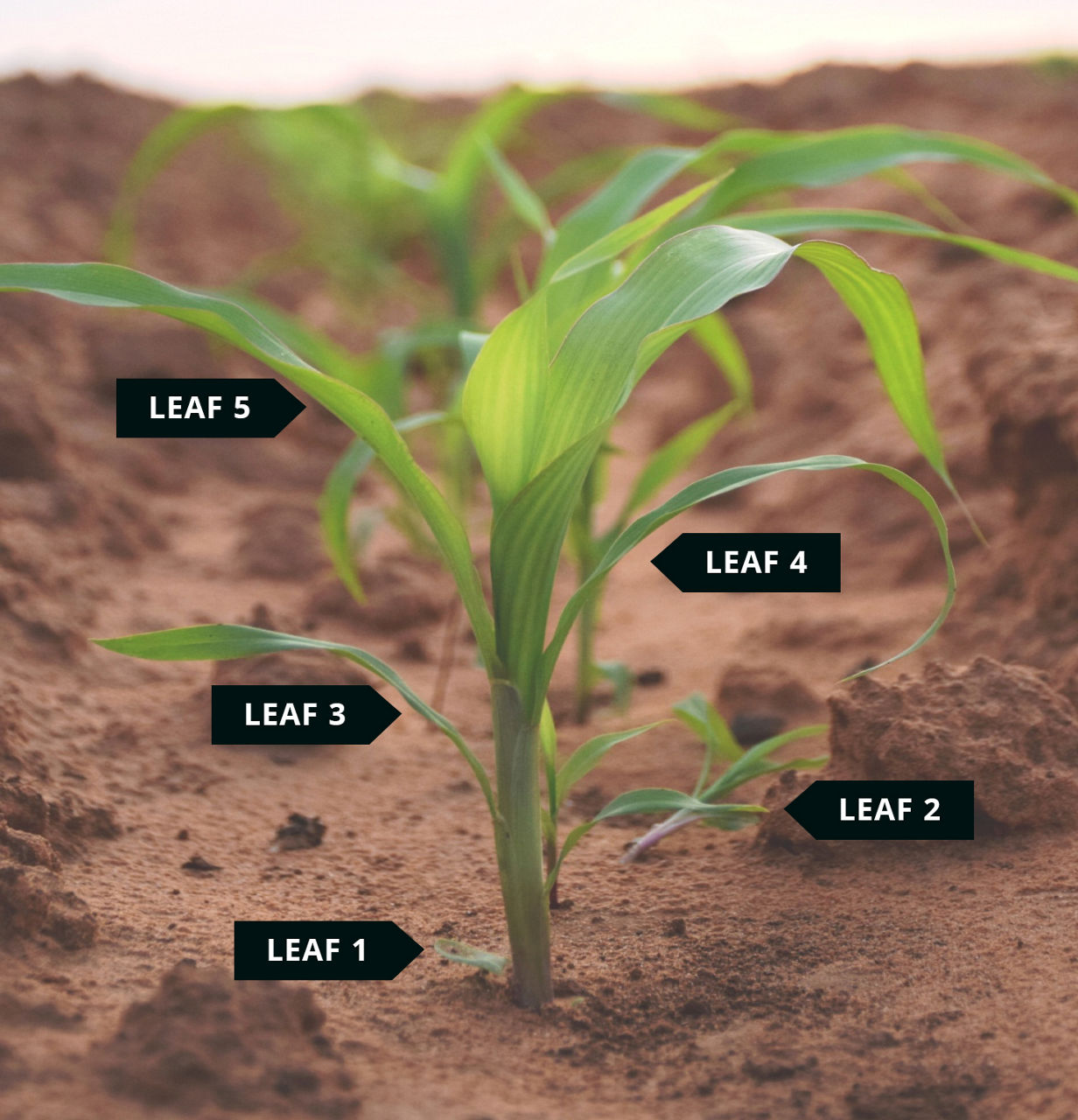Effects of Cold Temperature on Seedling Grain Sorghum
April 2, 2025
Early season growth is a critical aspect of producing grain sorghum. This typically includes planting into adequate soil moisture conditions with a soil temperature of 58 to 60 °F.1 Yield components are set within the first 30 days following emergence, so growers may wonder if stress or reduction in growth from cold temperatures could impact the crop’s yield potential.
Do Cold Temperatures Within Weeks of Emergence Have an Adverse Effect on Grain Yield Potential?
A 2013 research paper published in Crop Science determined that early season cold stress reduced seedling vigor and leaf chlorophyll content, while delaying flowering and maturity by eight and four days, respectively, but had no effect on yield components or plant height. The study found that the effect of cold stress at the seedling stage was not critical to grain yield potential, if emergence was not affected.2
Sorghum that is planted earlier than “normal” planting dates for a given geographic area may encounter periods of cold temperatures in the early vegetative (V) stages of growth. At the V5 growth stage, the collar of the fifth fully expanded leaf is visible (Figure 1). This stage occurs approximately 25 days after emergence, when plants are about seven to nine inches tall. The growing point is at or just below the soil surface at this stage.

Can Grain Sorghum Tolerate Frost or Freezing Temperatures After Emergence?
Within the first 30 days following emergence, grain sorghum can withstand significant damage due to air temperatures of 28 to 32 °F without adverse effects on yield. This is because the growing point is still at or below the soil surface.3,4 Prolonged cool, cloudy weather conditions may cause a temporary purpling of leaf margins, and leaf blades may develop interveinal chlorosis (yellowing). The purple color is due to an accumulation of anthocyanin, a water-soluble pigment, that may result from insufficient phosphorus (P) uptake or from the plant’s inability to move sugars from the leaf blade to other plant parts at a normal rate.5
What Does Frost or Freeze Injury Look Like?
The National Weather Service uses the following temperature thresholds for defining frost or freeze: 36 °F for frost, 32 °F for freeze, and 25 °F for a hard freeze.6 Leaf tissue that has been exposed to frost or freezing temperatures is likely to become discolored, often turning gray to greenish-black within a few hours and eventually dying and turning brown. The most important plant part that should be evaluated for damage is the growing point. A freeze-damaged growing point appears water soaked, discolored (brown), or soft, and is very unlikely to recover. A healthy growing point is firm and whiteish in color. Allow at least three to five days before an evaluation is made. Evidence of regrowth occurs when new leaf tissue emerges from the whorl. Warm (above 70 °F), dry, and sunny days helps regrowth occur more quickly than cool, cloudy conditions.7
What is the Impact of Leaf Area Loss Due to Freeze Injury?
A 50% reduction in leaf area (defoliation) at the V10 growth stage can result in a yield loss of about 6%, regardless of the cause of the leaf area loss. Therefore, any defoliation prior to the V10 growth stage is likely insignificant. Significant yield losses due to a freeze event on grain sorghum is more likely due to stand loss rather than defoliation.7
Sources
1Lofton, J., Zander, A., and Harris, C. 2019. Influence of hybrids on cold soil germination in grain sorghum. Oklahoma State University Extension. CR-2185. https://extension.okstate.edu/fact-sheets/influence-of-hybrids-on-cold-soil-germination-in-grain-sorghum.html
2Maulana, F. and Tesso, T.T. 2013. Cold temperature episode at seedling and flowering stages reduces growth and yield components in sorghum. Crop Science. 53(2): 564–574. https://doi.org/10.2135/cropsci2011.12.0649
3Rodriguez, D., Eyre, J., Serafin, L., and Aisthorpe, D. 2021. Radical rethink of sorghum cold tolerance. Grains Research and Development Corporation, Groundcover. https://groundcover.grdc.com.au/crops/coarse-grains/radical-rethink-of-sorghum-cold-tolerance
4Creech, C., Graham, C., Mueller, N. et al. Nebraska and South Dakota product guide. United Sorghum Checkoff Program. https://www.sorghumcheckoff.com/wp-content/uploads/2021/11/2019_01_08_NESD.pdf
5Gerik, T., Bean, B., and Vanderlip, R. 2003. Sorghum growth and development. Texas A&M AgriLife Extension. SCSC-PU-069. https://cdn-de.agrilife.org/extension/departments/scsc/scsc-pu-069/publications/files/sorghum-growth-and-development-1.pdf
6National Weather Service. Autumn frost and freeze information for the NWS Tallahassee area. https://www.weather.gov/tae/frost_and_freeze_info#:~:text=The%20frost%2Ffreeze%20program%20looks,of%2032%C2%B0%20or%20lower.
7Schnell, R. 2021. Freeze injury, low temperature stress and chill injury in corn and sorghum. Texas A&M AgriLife Extension, Texas Row Crops Newsletter. https://agrilife.org/texasrowcrops/2021/03/01/freeze-injury-low-temperature-stress-and-chill-injury-in-corn-and-sorghum/
Web sources verified 03/13/25. 2122_525650